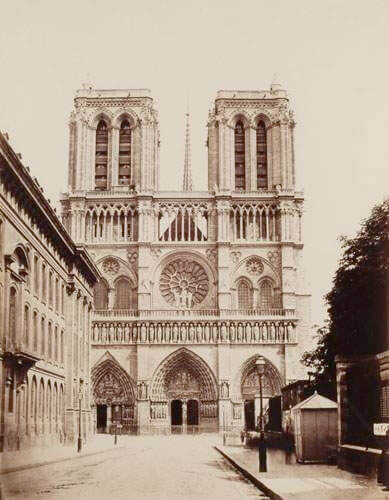Born in 1831, Achille Quinet was a successful photographer who operated a studio at 320 rue St Honoré, Paris from about 1869 to 1879. Although Quinet made photographs of the moments and architecture of Paris as well as a series of views of Italy, he is best known for his landscape, animals and figure studies, many of which were made in or around the town of Barbizon and the forest of Fontainebleau. These photographs, which were likely intended as aids to painters, are generally albumen prints mounted on blue card stock, with the stamp “Étude d’Après Nature’ as well as a red rubber stamp of his name. Some images are mounted on white stock with the blind stamp “A le. Quinet fils.” A member of the Sociéte Française de Photographie from 1876 to 1894, Quinet exhibited his work at the universal exhibition of 1878. Most of Quinet’s work is housed at the Bibliothèque Nationale, Paris, where he deposited his Etudes at the Depôt Légal in 1868, 1875, and 1877. Quinet’s work is occasionally confused with that of his contemporary, Constant-Alexandre Famin. While the pair made photographs with similar subject matter, general stylistic differences distinguish the two. It is possible that Quinet, acting as a publisher or dis- tributor, placed his own stamp on works made by Famin. After 1879, Quinet moved to Cély, near the Forest of Fontainebleau, where he died in 1900
